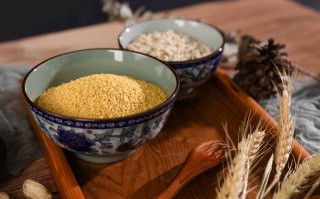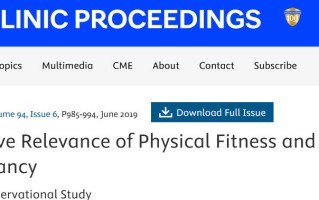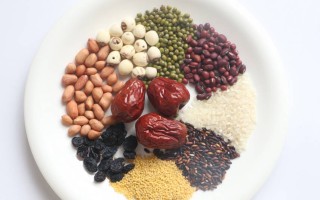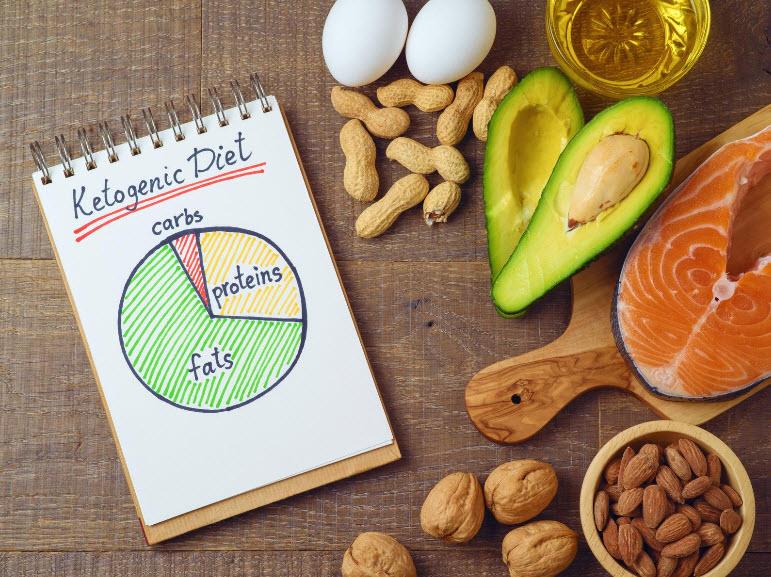
生酮饮食到底是什么?
碳水化合物、脂肪和蛋白质是人体能量的三大来源【57】。生酮饮食是一种脂肪极高,蛋白质适中,碳水化合物含量极低的饮食结构【1,2】。它涉及大幅度地用脂肪代替碳水化合物的摄入,从而改变人体能量代谢模式,让身体达到一种叫“营养酮症” (nutritional ketosis)的状态【1】。在该状态下,身体开始有效地燃烧脂肪以获取能量【1】。
什么是“营养酮症”?
正常情况下,我们身体习惯用葡萄糖(碳水化合物的一种)作为各处的能量来源,尤其是用于维持大脑运作。由于生酮饮食中摄取的碳水化合物极少,肝脏便会将脂肪转换为脂肪酸和酮体。酮体运到脑部取代葡萄糖成为能量来源【4-6】。当血液中的酮体含量达到0.5-3.0毫摩尔时,身体就处于“营养酮症”的状态了【7】。
生酮饮食分几类?
生酮饮食比较公认的有以下四类:
标准生酮饮食(standard ketogenic diet): 这是一种极低碳水化合物,中等蛋白质和高脂肪饮食【2】。
周期性生酮饮食(cyclical ketogenic diet):这种饮食涉及周期性地引进高碳水化合物的摄入,通常是一周内5-6天生酮饮食,然后1-2天较高碳水化合物饮食【9】。
针对性生酮饮食(targeted ketogenic diet):这种饮食可以让您在锻炼前后添加碳水化合物的摄入【1】。
高蛋白生酮饮食 (high-protein ketogenic diet):这类似于标准生酮饮食,但包含更多蛋白质。 该比例通常为60%脂肪,35%蛋白质和5%碳水化合物【1】。值得注意的是,有论调反驳这不能算是真正的生酮饮食,因为当蛋白质摄入这样高时,身体就开始分解蛋白质来制造葡萄糖为身体提供能量了,而不是用酮体【10】。目前的大部分研究涉及的是标准和高蛋白生酮饮食【1】。周期性或针对性生酮饮食更加复杂,主要是健美运动员和运动员用得比较多【1】。本文涉及的内容主要针对标准生酮饮食。
目前的研究对生酮饮食的定义很不一致,有很强的个体性【10】。个体中最低每天摄入20克,最高可以摄入100克的碳水化合物来让身体达到营养酮症定义下的血酮含量【10】。
以下的表格比较直观地比较了生酮饮食和传统健康均衡饮食的卡路里来源分布:

生酮饮食是一种限制性极强的饮食结构。饮食者需要避免谷类、豆制品、大部分水果、淀粉类蔬菜、含糖饮料和加糖的加工产品,主要从未加工过的动物蛋白、油脂、坚果、种子和未加糖的奶制品中获取能量。
以下这个表格总结了常见食物在生酮饮食中的定位【14】:
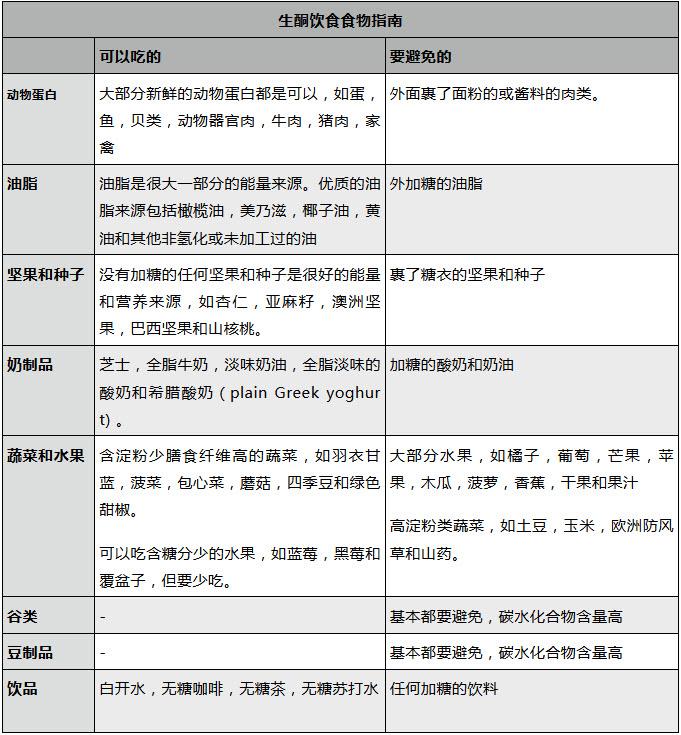
文献资料
1. Mawer, R. (2018, July 30). The Ketogenic Diet: A Detailed Beginner's Guide to Keto. Retrieved April 18, 2019, from https://www.healthline.com/nutrition/ketogenic-diet-101
2. Freeman, J.M., Kossoff, E.H, & Hartman, A.L. (2007, March). The Ketogenic Diet: one decade later. Pediatrics, 119(3):535-43.
3. Jockers, D. (2018, May). How to Follow A Vegan Ketogenic Diet. [Digital image]. Retrieved April 18, 2019, from https://drjockers.com/follow-vegan-ketogenic-diet/
4. Owen, O.E., Morgan, A.P., Kemp, H.G., Sullivan, J.M., Herrera, M.G. & Cahill Jr, G.F. (1967). Brain metabolism during fasting. Journal of Clinical Investigation, 46: 1589–1595.
5. Veech, R.L. (2004). The therapeutic implications of ketone bodies: The effects of ketone bodies in pathological conditions: ketosis, ketogenic diet, redox states, insulin resistance, and mitochondrial metabolism. Prostaglandins Leukot Essent Fatty Acids, 70: 309–319.
6. Fukao, T., Lopaschuk, G.D.& Mitchell, G.A. Pathways and control of ketone body metabolism: on the fringe of lipid biochemistry. (2004). Prostaglandins Leukotrienes Essential Fatty Acids, 70: 243–251.
7. The Global Diabetes Community. (n.d.). Ketosis. Retrieved April 18, 2019, from https://www.diabetes.co.uk/blood-glucose/ketosis.html
8. Volek, J. S., & Phinney, S. D. (2012). The art and science of low carbohydrate performance. Berlín: Beyond Obesity LLC.
9. Kubala, J. (2018, October 30). What Is the Cyclical Ketogenic Diet? Everything You Need to Know. Healthline. Retrieved April 18, 2019, from https://www.healthline.com/nutrition/cyclical-ketogenic-diet
10. Sit, B. (2018). ESN Learning Center - Is the Ketogenic Diet right for You? Retrieved April 18, 2019, from https://www.evolvedsportandnutrition.com/
11. Health Canada. (2012, March 15). Do Canadian Adults Meet Their Nutrient Requirements Through Food Intake Alone? Retrieved April 13, 2019, from https://www.canada.ca/en/health-canada/services/food-nutrition/food-nutrition-surveillance/health-nutrition-surveys/canadian-community-health-survey-cchs/canadian-adults-meet-their-nutrient-requirements-through-food-intake-alone-health-canada-2012.html
12. Banda, W. (2016, November 18). How to Calculate Your Ideal Macronutrients Intake [Macro Recommendation for Ketogenic Diet]. Retrieved April 17, 2019, from https://shapescale.com/blog/health/nutrition/calculate-macronutrient-rati
13. Hyman, M. (2018, October 29). What Is the Keto Diet (and Should You Try It)? [Digital image]. Retrieved April 17, 2019, from https://health.clevelandclinic.org/what-is-the-keto-diet-and-should-you-try-it/
14. Sharp, A. (2018, April 24). Pros and Cons of the Keto Diet. Retrieved April 17, 2019, from https://www.abbeyskitchen.com/the-keto-diet-ketogenic/
57. Tribole, E., & Resch, E. (2012). Intuitive eating: A revolutionary program that works (Third ed.). New York: St. Martins Griffin.
《北美华人健康》2019年卷第3期. Volume 2019, Number 3
标签: 肥胖


